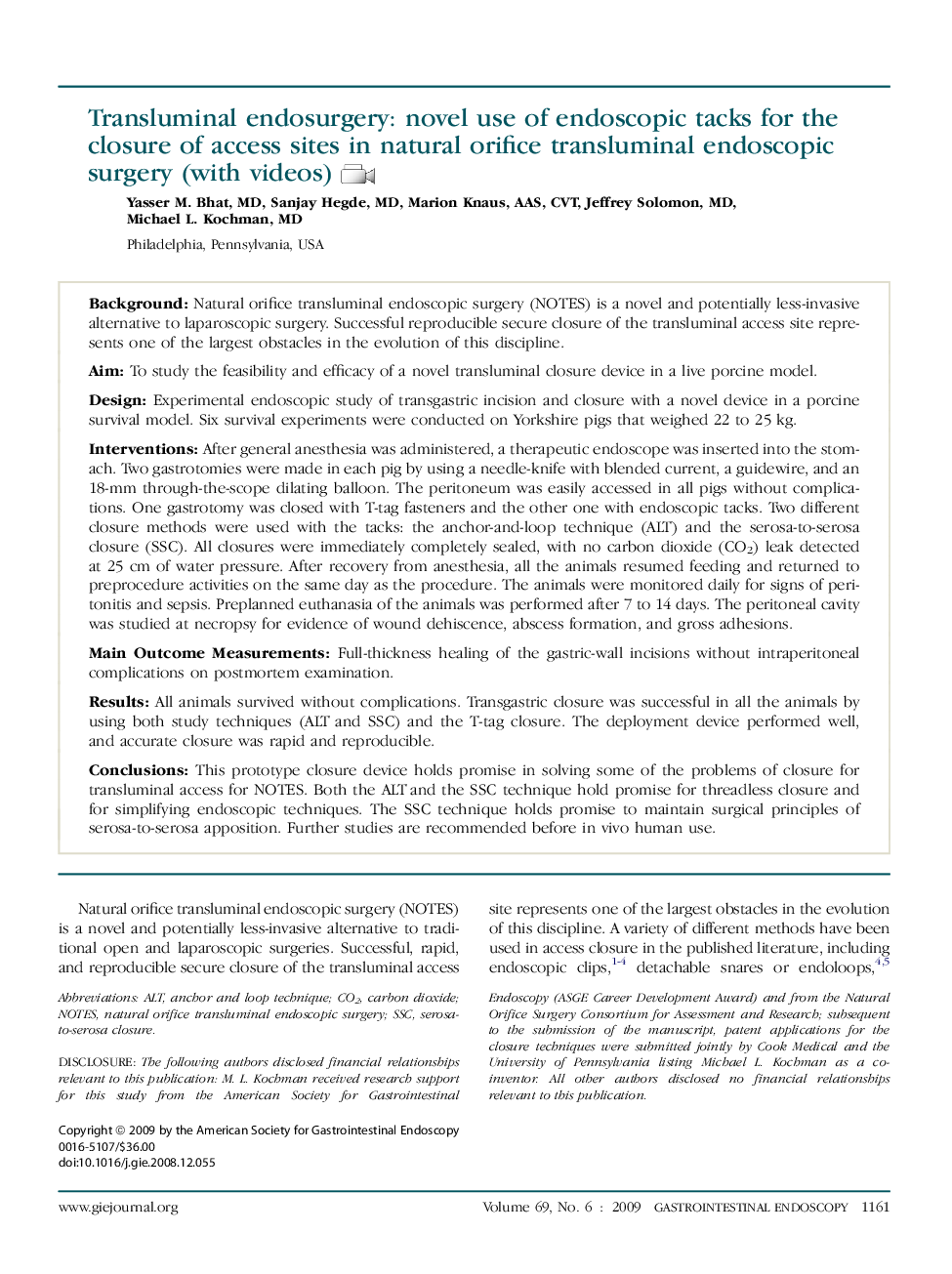| Article ID | Journal | Published Year | Pages | File Type |
|---|---|---|---|---|
| 3308122 | Gastrointestinal Endoscopy | 2009 | 6 Pages |
BackgroundNatural orifice transluminal endoscopic surgery (NOTES) is a novel and potentially less-invasive alternative to laparoscopic surgery. Successful reproducible secure closure of the transluminal access site represents one of the largest obstacles in the evolution of this discipline.AimTo study the feasibility and efficacy of a novel transluminal closure device in a live porcine model.DesignExperimental endoscopic study of transgastric incision and closure with a novel device in a porcine survival model. Six survival experiments were conducted on Yorkshire pigs that weighed 22 to 25 kg.InterventionsAfter general anesthesia was administered, a therapeutic endoscope was inserted into the stomach. Two gastrotomies were made in each pig by using a needle-knife with blended current, a guidewire, and an 18-mm through-the-scope dilating balloon. The peritoneum was easily accessed in all pigs without complications. One gastrotomy was closed with T-tag fasteners and the other one with endoscopic tacks. Two different closure methods were used with the tacks: the anchor-and-loop technique (ALT) and the serosa-to-serosa closure (SSC). All closures were immediately completely sealed, with no carbon dioxide (CO2) leak detected at 25 cm of water pressure. After recovery from anesthesia, all the animals resumed feeding and returned to preprocedure activities on the same day as the procedure. The animals were monitored daily for signs of peritonitis and sepsis. Preplanned euthanasia of the animals was performed after 7 to 14 days. The peritoneal cavity was studied at necropsy for evidence of wound dehiscence, abscess formation, and gross adhesions.Main Outcome MeasurementsFull-thickness healing of the gastric-wall incisions without intraperitoneal complications on postmortem examination.ResultsAll animals survived without complications. Transgastric closure was successful in all the animals by using both study techniques (ALT and SSC) and the T-tag closure. The deployment device performed well, and accurate closure was rapid and reproducible.ConclusionsThis prototype closure device holds promise in solving some of the problems of closure for transluminal access for NOTES. Both the ALT and the SSC technique hold promise for threadless closure and for simplifying endoscopic techniques. The SSC technique holds promise to maintain surgical principles of serosa-to-serosa apposition. Further studies are recommended before in vivo human use.
